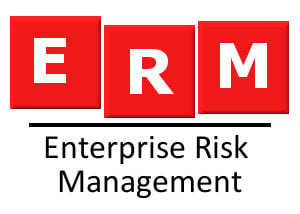
Enterprise Risk Management (ERM) concepts can help retailers create a competitive advantage out of the business of managing risk. ERM’s “portfolio view” collects all risk and mitigation activity into a single Risk Register. This enables management to coordinate mitigation efforts across functions, rather than leaving risk to be managed in a patchwork fashion among various pockets in the organization. These are the critical areas for retail organizations where embracing an ERM approach adds value and opportunities that would likely otherwise be “missed:”
Identifying Opportunities in a Sales Slump
All retailers prepare for and routinely mitigate the effects of general downturns in consumer spending. For example, retail buyers scale back the amounts of purchasing they do, and marketing activity is honed to help maintain market share. However, if these individual responses are managed solely at the department level, the executive management of the retailer misses out on the opportunity to redirect efforts and resources across the enterprise. The sales slump might afford opportunities to reallocate time to improve distribution management, or evaluate and enhance in-store display guidance. A slowdown in sales might also afford an opportunity to put more attention into the retailer’s relationships with suppliers and sales channel partners. Managing mitigation efforts across the enterprise unlocks these opportunities. The resulting mitigation activities have the dual purpose of defending market share during a period of declining sales and better positioning the retailer for both the upturn and the (inevitable) next downturn.
Holistic Defense against Reputation Damage
Retailers provide customers with numerous channels for feedback, complaints and questions. These come in the form of web submissions, emails, phone messages, and interactive phone services; or through in-person, in-store communication. Savvy retailers monitor social media, web news and blog posts (either in-house or through outsourced services) for word-of-mouth brand ambassadors, criticisms and for gauging overall brand perception. These efforts are in addition to the traditional tracking of digital, print, radio, television and out-of-home advertising. When amalgamated, this web of activity can serve as an early warning of reputation damage in the making, and afford an opportunity to address consumer concerns and get a handle on reputation management.
All of these sources of potential reputation issues are typically housed in separate operations: website maintenance, call centers, regional store management operations, the marketing department and the public relations office. If each of these operations independently creates and conducts separate intake and response policies and procedures, they create the potential for inconsistent treatment and messages. ERM allows management to direct a holistic approach with a policy and a set of procedures that harmonizes the messages of the separate departments.
ERM’s discipline of an organized approach to mitigation of such risks as reputation damage tends to uncover planning opportunities with an even broader application. Considering that type of planning for an extreme threat to the retailer’s reputation through a catastrophic event, such as a cyber attack or major product recall, would lead to such provisions as:
- Pre-identifying a central location for crisis operations
- Designating and preparing the appropriate spokespersons
- Developing unified messaging and ensuring transparency to all stakeholders
- Consumers
- Employees
- Vendors
- Board members
- Financial institutions
- Effective management of media relations and communications
- Establishing procedures and participants for a post-crisis review of effectiveness
Vetting the Supply Chain
The path from raw materials to the finished product can wend through a web of suppliers, manufacturers and distributors; and the brokers, agents and consultants who bring them together. These participants in the supply chain may cross a number of borders. The Foreign Corrupt Practices Act (FCPA) and the UK Bribery Act have placed onus on retailers to vet their direct and indirect relationships for potential violators. Significantly stepped-up enforcement of the FCPA in the middle market has increased the exposure. The UK’s Modern Anti-Slavery Act of 2015 deputized companies in the fight against slave labor and trafficking around the globe. The tide is definitely in favor of increasing the responsibility of companies for policing their supply chains.
ERM provides the enterprise-wide coordination of such disparate functions as:
- Legal and regulatory departments
- Supply chain and sourcing management
- Sales management
- Marketing
- Third-party management
- Outsourced foreign entity vetting services
All of the above need to be brought together for an effective response and proper management at the executive level.
An Extra Dimension for Preparedness: Velocity
ERM can also take into account the speed of onset of a given risk. The concept can be illustrated with the risks considered above. Sector-wide purchasing levels are forecast well in advance and, if a decline is in the offing, it will take time to develop. For example, retailers already know that this holiday season’s sales do not pose that risk: According to the National Retail Federation, retail sales are forecast to increase 3.6 percent and online sales to increase between seven and 10 percent. By contrast, in this age of social media, damage to reputation can develop in minutes. The supply chain exhibits risk at either end of the velocity continuum; a shortage of raw materials is likely to be identified well in advance, whereas the recent bankruptcy of the Hanjin Shipping Co. came with no warning and left retail goods stranded at sea overnight.
ERM can take into consideration the velocity of risk as a factor and build the effect into the risk profile for the retailer.
The range of potential benefits – operational improvements, contingency planning, corporate responsibility and timely response – attest to ERM’s ability to help turn risk mitigation into your edge.
Contact us if you are shopping for an ERM solution.


